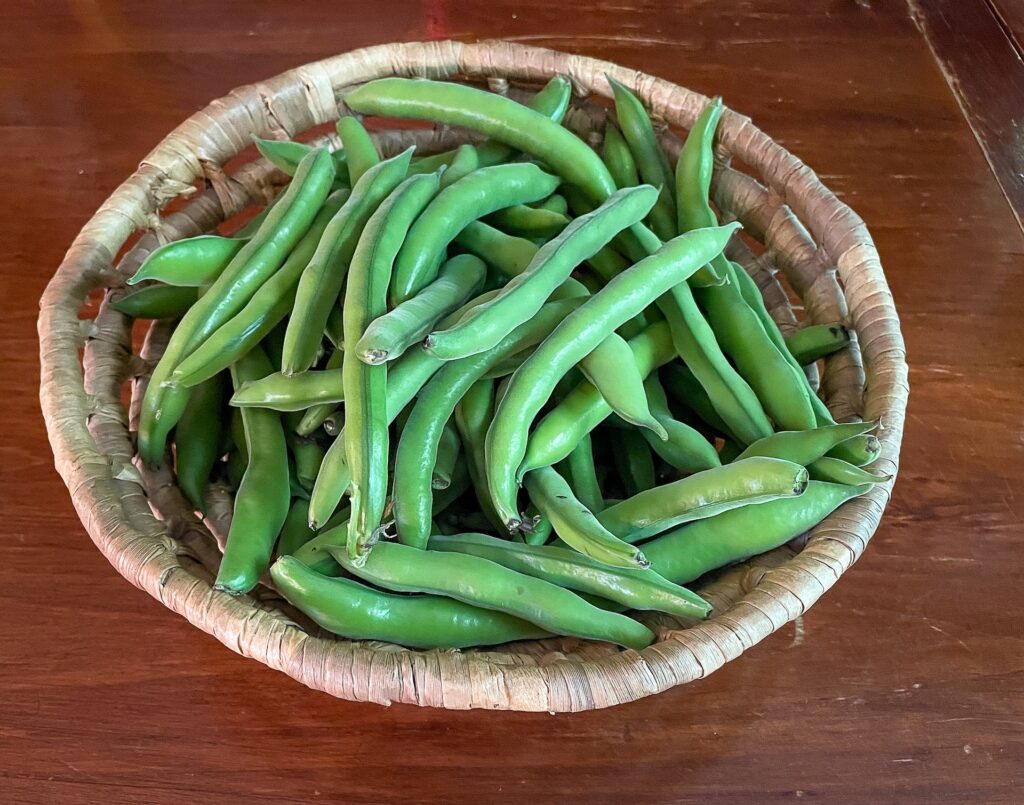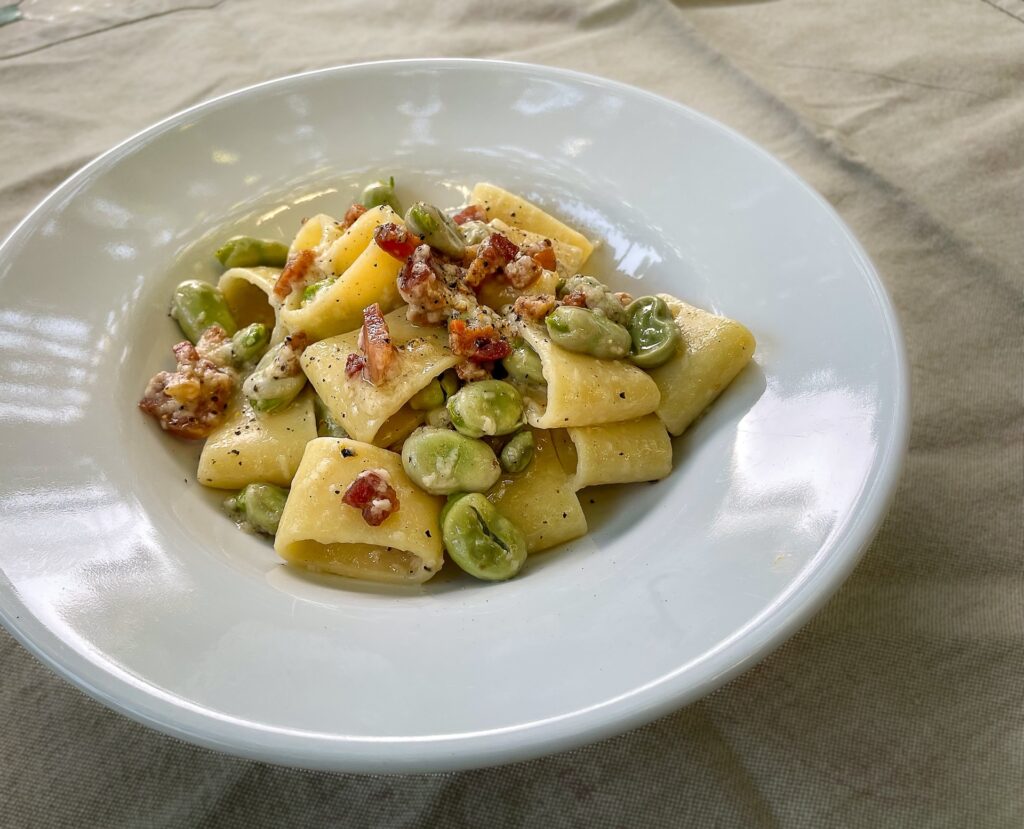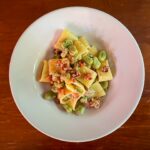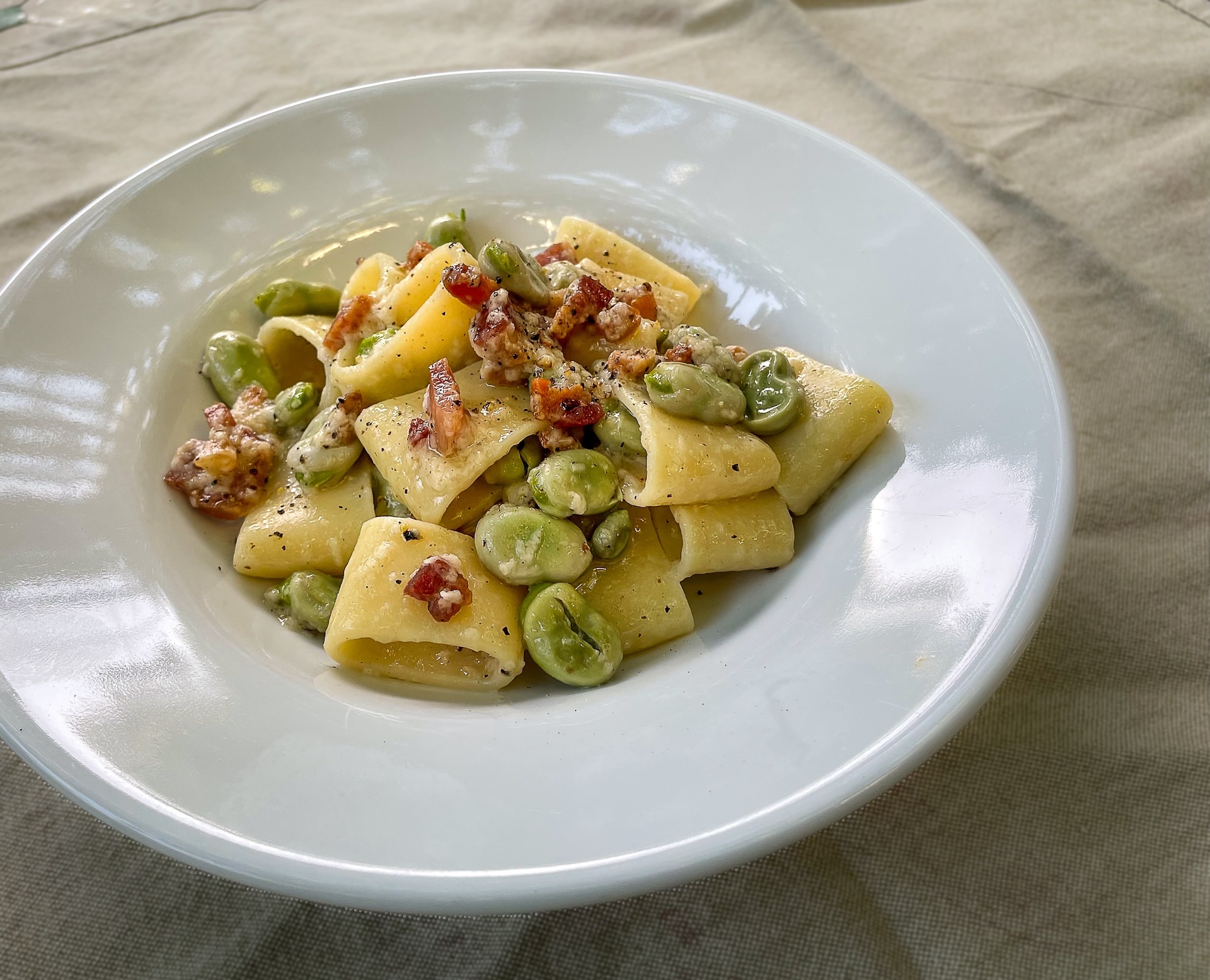
Pasta alla Gricia is one of the four famous pastas of Rome. The others, Amatriciana, Carbonara and Cacao e pepe are well know but Gricia often gets let off the list. This pasta is another simple combination of the good quality ingredients, guanciale (if you can find it) or pancetta , Pecorino Romano DOP and black pepper. Also, at the moment, I am knee deep in fresh fava beans from my garden and I think they make an amazing addition to this simple dish.
May Day (May 1st) in Italy is traditionally celebrated by eating fresh fava beans and young Pecorino cheese. The holiday, the rough equivalent of the USA Labor Day celebrates hard work and that Springtime is in full swing with summer just around the corner. After a one year hiatus, my fava bean harvest is back in a big way.

I used to have a not-so-deep raised bed for fava beans and then summer tomatoes. I’ve known for a while that the bed wasn’t deep enough to handle these two crops or to get the benefit of beans adding nitrogen back into the soil. A year ago I took on the project to rip out the old 6-inch deep planters and install a new 3-feet deep raised beds.
My first summer tomato crop was amazing. I canned, and canned, canned tomatoes all summer. And this spring, a truly bumper crop of fava beans is underway with it only starting to produce beans. Again, we had a lot of rain again this spring so the beans are arriving late and the tomatoes will go in a little late too. But the beans have arrived just in time for May Day.
If you can find fresh fava beans, there are many ways to be creative. We’ve published a lot of recipes over the years for them. Often when cooking fava beans, you need to remove the tough outer husk and then the inner skin. This recipe is a way to avoid the second peel which is the hardest part.
Enjoy Springtime before the hot days of Summer arrive. Savor this time with pasta dishes filled with lots of Springtime vegetables.
Saluti… 🥂🥂🥂
Joe


Pasta alla Gricia with Fava Beans
Ingredients
- 1 cup fresh fava beans, removed from their thick outer husks
- 4 oz. guanciale (if you can find it) or pancetta, cut into small short strips (lardons)
- 1 cup Pecorino Romano DOP cheese, grated on a microplane grater
- 2 servings (about 1½ cups) dry short tubular pasta, such as mezze rigatoni or calamarata
- Black pepper rady to grind
- Kosher salt
Instructions
- Bring a small pot of water to boil. Add a large pinch of salt and then the fava beans. When it comes back to boil, cook for 1 minute. Give a bean a taste and make sure they are soft enough to eat. Cook more if needed. Drain and rinse under cold water.
- Add the pancetta to a cold sauté pan big enough to hold the pasta once cooked. Turn the heat on to low or medium low and slowly render the fat from the meat. Stir occasionally so all sides of the pancetta cook. Avoid cooking too fast otherwise you will seal the fat inside the pancetta. This will take about 15-20 mins.
- Grind pepper directly into the pan, to taste.
- Add the blanched fava beans to the pancetta and accumulated oil and sauce gently until the inner green bean starts to pop out of the beans inner skin.
- Remove the sauté pan from the heat.
- Cook the pasta in salted water until just ready to eat. The pasta will not cook further in the pan like in other pasta dishes.
- Retain a little pasta water in a measuring cup, drain the pasta and place in the sauce pan. Add the grated cheese and whisk the pasta and cheese into the oil in the pan. Add a little pasta water as need to thin out the sauce.
- Serve immediately passing more grated Pecorino Romano DOP.


Sounds delicious! I had a gricia with thinly sliced artichokes in Rome last year and it was to die for. This is next up if I can manage to source the fava beans around here.